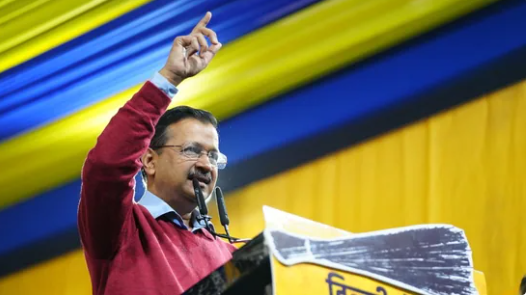
Delhi Jal Board CEO Refutes Arvind Kejriwal’s ‘Poison in Yamuna’ Claim: What You Need to Know
In recent days, Delhi Chief Minister Arvind Kejriwal’s claim that the Yamuna River’s water is laced with “poison” has sparked heated debate. The claim has generated significant concern among Delhi’s residents and raised questions about water safety in the city. However, the CEO of the Delhi Jal Board (DJB), the body responsible for providing water to the city, has come forward to categorically dismiss these claims, describing them as “factually incorrect” and lacking any substantial basis.
This controversy is not just a political issue but one with direct implications for public health and environmental policy. In this article, we’ll break down the details surrounding the claim, the response from the DJB, and what all this means for water safety in the capital.
The Claim: Arvind Kejriwal’s Statement on ‘Poison in Yamuna’
The controversy began when Arvind Kejriwal, in a public address, made a serious accusation regarding the water quality in the Yamuna River. According to the Delhi CM, the Yamuna’s water contained harmful toxins that he referred to as “poison.” Kejriwal, who has often taken strong stances on environmental issues, stated that the polluted water could pose a severe threat to the health of Delhi’s residents, especially given the city’s reliance on the river for water supply.
He suggested that the river had become heavily contaminated, with pollutants and chemicals making it dangerous for consumption. The nature of the toxins in the water, according to Kejriwal, had the potential to cause health problems for those using the river’s water for various purposes, including drinking, bathing, and irrigation.
While the Chief Minister’s concern over the environmental impact was clear, the statement raised eyebrows due to its alarming tone. After all, the Yamuna has long been one of the most polluted rivers in India, suffering from unchecked industrial discharge, untreated sewage, and plastic waste. But were the claims about “poison” accurate?
The Response: Delhi Jal Board CEO’s Denial
The Delhi Jal Board CEO, who is directly responsible for managing water quality in the city, quickly responded to Kejriwal’s assertions. In a formal statement, the DJB CEO vehemently rejected the claim, labeling it as factually incorrect and devoid of any scientific evidence. According to the DJB, water samples tested from the Yamuna did not support the claim of “poison” or extreme toxicity.
The CEO emphasized that while the Yamuna River is indeed polluted, the water supplied to Delhi from the river undergoes extensive treatment processes to ensure that it meets the required safety standards for drinking and daily use. This includes various stages of filtration, chlorination, and purification, designed to remove harmful contaminants before the water reaches homes and businesses.
This clarification from the DJB CEO suggests that the river’s water, though polluted, does not contain the life-threatening toxins that Kejriwal’s claim implied. The statement emphasized that the water delivered to residents is safe, as long as it goes through the necessary purification procedures.
The Bigger Picture: Pollution in the Yamuna
While the DJB’s assurances may have reassured some, the broader issue of pollution in the Yamuna River remains a serious concern. The Yamuna has been heavily polluted for decades, and it is widely regarded as one of the most polluted rivers in India. Industrial waste, untreated sewage, and plastic waste have contributed to the deteriorating condition of the river.
According to environmental experts, the water quality of the Yamuna deteriorates significantly in many stretches, especially in the parts that flow through industrial zones. The river is often laden with high levels of biochemical oxygen demand (BOD) and total suspended solids (TSS), making it unfit for direct consumption.
However, the DJB maintains that the water supplied to the city is treated and filtered to remove these contaminants. Despite this, the question remains whether the purification processes are sufficient to ensure water safety in the long run, given the increasing pollution levels.
What Does This Mean for Delhi’s Water Safety?
The public back-and-forth over the safety of Delhi’s water supplies underscores the importance of transparency and reliable communication when it comes to health and environmental matters. If the Yamuna River water is truly safe after treatment, it’s crucial that the DJB shares more detailed data with the public to allay concerns.
On the other hand, the government needs to focus on cleaning up the river itself. While treatment plants do play a vital role in purifying water, they cannot address the root cause of the pollution. Effective management of sewage, industrial waste, and waste disposal systems must be prioritized to restore the Yamuna to a cleaner, healthier state. A sustained effort from both the government and the citizens is essential for this long-term goal.
The controversy highlights the need for a balanced approach to environmental policy. While concerns about water safety are valid, it’s also important to ground such claims in fact-based evidence. Alarmist rhetoric without supporting data can cause unnecessary panic and undermine public trust.
Conclusion
In conclusion, the clash between Arvind Kejriwal’s dramatic “poison in the Yamuna” claim and the Delhi Jal Board CEO’s refutation brings into sharp focus the ongoing issue of water quality and pollution in the national capital. The truth likely lies somewhere in between. While the Yamuna’s water quality is indeed concerning, especially in certain stretches of the river, it is also true that Delhi’s water treatment systems work to ensure that the water supply is safe for consumption.
What’s clear is that the issue of water safety in Delhi requires continued attention. It’s not just about addressing immediate contamination concerns but also about long-term efforts to clean up the river and maintain sustainable water practices.
As Delhi continues to grow, managing water resources effectively and ensuring the safety of drinking water must remain at the top of the government’s agenda. Whether through improving pollution control measures, upgrading purification technologies, or enhancing public awareness, the health of millions depends on the decisions made today.





